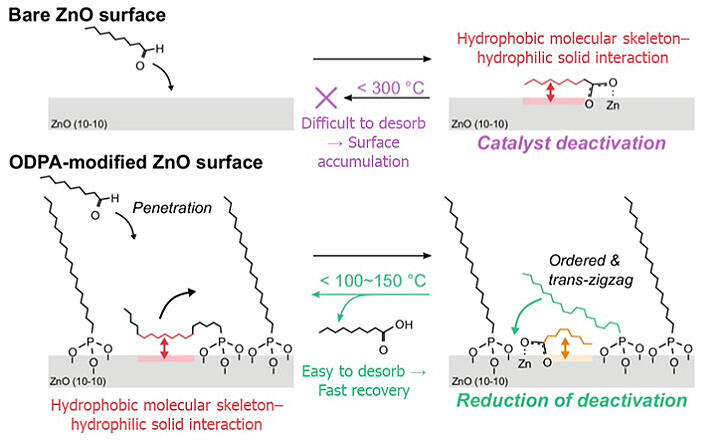"Artificial olfactory sensors," which sense odor molecules as electrical signals, are expected to be useful in various fields, such as medical care, environmental monitoring, and food quality control. However, it has been difficult to achieve both sensing sensitivity and "robustness," which indicates stable detection of molecules over a long period of time. This is because the molecules that accumulate on the surface of the sensor material gradually deteriorate its performance. Techniques to remove such molecules by ultraviolet irradiation and high-temperature treatment have not solved the problem because they also remove the organic molecules, modifying the material surface.
A research group led by Professor Takeshi Yanagida of the Graduate School of Engineering at the University of Tokyo has developed an artificial olfactory sensor consisting of hydrophilic zinc oxide nanowires with a surface modified with a hydrophobic long-chain organic molecule (ODPA). The research group found that ODPA strongly interacted with the nanowire surface and inhibited the accumulation of molecules responsible for the deterioration of sensor properties. Consequently, the sensor sensitivity remains at the original level, and the sensor can detect molecules stably during long-term operation.
"Van der Waals forces," the weak attractive forces between molecules, have often been neglected in artificial olfactory sensor research. This type of force - in particular, force between hydrophobic and hydrophilic molecules - has been considered negligible. In this study, however, they demonstrated that Van der Waals interactions between the hydrophobic molecular skeleton and the hydrophilic solid surface can be exploited as a new principle of sensor operation.
This achievement provides a new guideline not only for "odor data science," a new science field that derives value from long-term measurement data of information on various odors found around us, but also for the research and development of artificial olfactory sensors for developing social applications of this new science. Moving forward, the findings may contribute to medicine, environment, and food sectors and the creation of new industries through operational cost reduction associated with improved sensor robustness.
New principle of operation of the developed artificial olfactory sensor





